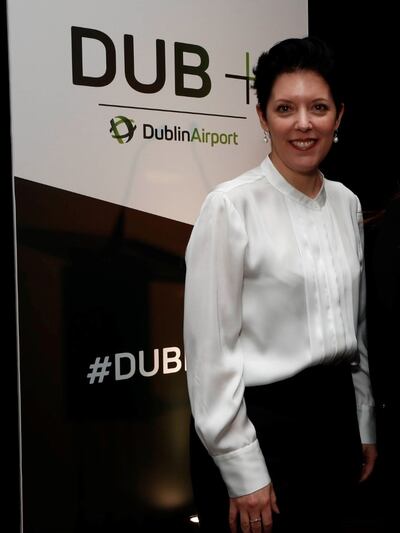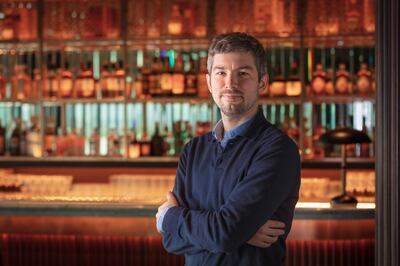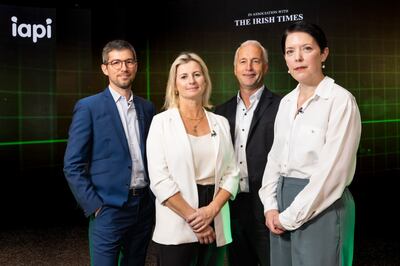“There are numerous pressing concerns and issues for business leaders today, such as the geopolitical concerns arising from the tragic war in Ukraine, and their negative impact on energy, inflation, and supply chains; as well as ongoing issues around Brexit, and the climate crisis. So, the need to reassess and look at how well our businesses are being run has never been so important,” says Thora Mackey CDir, chief operating officer at the Institute of Directors (IoD) in Ireland.
“Our recent online seminar, Putting Brand at the Heart of Your Financial Strategy, in partnership with IAPI, helped to address this issue with a line-up of high-level speakers who examined the relationship between long lasting brand strategies and business performance.”
She said the event helped to illustrate how looking at your brand can help foster business growth, which has never been so crucial.

How having a strong brand can help an organisation through even the most trying times was one of the themes taken up by Louise Bannon, head of marketing at the DAA, at a recent advertising industry conference.
What is the National Gallery’s scanner that cost €125,000 and what would it be used for?
‘We grew up Irish Catholic’: How Nicola Coughlan got raunchy Bridgerton scenes cut
The Last Showgirl review: Pamela Anderson has found the right role at the right time
‘I’m 50 this year and feel a bit like a teenager with my problem. My best friend has fallen in love’
Bannon was one of a number of senior figures to speak at Putting Brand at the Heart of your Financial Strategy, a thought leadership seminar run by IAPI, the institute of advertising practitioners in Ireland, a representative body for the commercial creativity and communications sector, in association with the IOD.
Her experience leading the DAA marketing team at a time when airports around the world were struggling to cope with the post-pandemic rebound in international travel was particularly apt.
“If ever you needed to demonstrate how important your brand is, and how important your reputation is, we’ve seen it this summer. We went from two years of Covid decimating the sector, and all the external difficulties that go with that, to the most challenging few months we’ve had in our lifetime both as an airport and across the whole sector,” said Bannon.
She held her hands up in relation to the significant difficulties at Dublin Airport earlier this summer, and the ongoing difficulties experienced by airline passengers.
“We are still not where we need to be,” said Bannon. “We came into this summer off a strong base reputationally, ranking 12th on Reptrak, the corporate reputation management organisation, which I would hope has helped. [But] we have a journey to go on to build back people’s trust.”
An airport is a charged environment, she pointed out, so how people feel about the airport’s brand has a disproportionate impact on them. Fears about missed flights and lost luggage don’t help. “We have to earn back people’s trust and reduce people’s additional anxiety.”
Though the situation has improved, “we are still not where we need to be”, she added.
We are hugely interdependent on others and this interdependency came to the fore in recent weeks. We don’t control everything, but as the airport operator we need to be part of the solution
However, clearly communicating the brand out into the wider airport campus helped because, while DAA is the airport operator, it accounts for only a fraction – around 2,800 – of the 20,000 people that work there for companies such as airlines and baggage handlers.
“We are hugely interdependent on others and this interdependency came to the fore in recent weeks. We don’t control everything but as the airport operator we need to be part of the solution. When dealing with our partners it helps that we are clear on what we stand for and what we are trying to do,” she said.
Challenges such as these test how “true” your brand strategy is.
“A really good brand strategy is based on a razor-sharp understanding of your organisation and customers. Things go wrong but did our brand strategy hold true in how we responded? For me it absolutely has done,” she said.
One of the brand values DAA espouses is warmth, she explained.
“We have always needed to keep the human touch while driving efficiency. What stayed absolutely true to our brand was the way in which our people responded on the ground this summer, doing extra shifts, coming up with creative ideas to serve customers better and, when queues were long, being helpful. Even though we are still not where we need to be, we saw that in spades,” she said.
It included more than 4,000 shifts worked on the ground by non-frontline staff, from all departments and at all levels, who came in at weekends and on days off, volunteering to pull early morning and late-night shifts to help - including Bannon.

What brand development does for any organisation is bring what she describes as “emotion” to that strategy.
“Brand strategy recognises the fact that so much of what we do as people, as customers, is driven by emotion. It’s not all rational, and we need to recognise this, particularly in a service business. It’s not just getting a task done, it’s how you make people feel,” she added.
A strong brand strategy also helps decision makers think “in the round”, said Bannon, who said more marketeers are needed at top tables to help drive that. However, for that to happen, she says marketeers need to get better at demonstrating a return on investment.
“Finance people have been talking about Ebitda [earnings before interest, tax, depreciation and amortisation, a measure of a company’s overall financial performance] since the 1970s. Those metrics haven’t changed,” she said.
By contrast, in the advertising and marketing sector, digitisation has led to a plethora of measures, from eyeballs and page impressions to click throughs and beyond.
This lack of clarity does not help the industry. “It has created a snake oil, smoke and mirrors perception. We’re still not saying what a campaign will actually do. We’re too vague and that’s the last hurdle we need to address,” she said.
“How do we confidently assess our impact?” she asked. “If we are an investment and not a cost, we need to be able to show the return. When it comes to finance people, talking about “brand salience” just doesn’t cut it.”

Benjamin Granger, chief financial officer at Irish Distillers, felt similarly. The company is part of the Pernod Ricard group and home to some of Ireland’s most iconic drinks brands, including Jameson, Powers and Midleton whiskeys.
“As a brand-led organisation, we are very convinced of the benefits of strong brands, and what they present to consumers,” he said.
He doesn’t look at marketing budgets in isolation but takes a more global, longer-term, strategic view.
“One of the main roles of finance in helping to build brands is to ensure marketing and advertising is seen as an investment and not as a cost. To do that you have to manage the budget as an investment and, like any investment decision, choose how it is being made on the back of solid return expectations,” he explained.
“It’s not just about the amount you are investing, it’s how you are investing it, and making sure you are making the most of the budget you have. In the last number of years, marketing effectiveness has become a key strategic objective for brand-led organisations like ours, given its role in helping to support sustainable growth for the long term.”

Brands must also be invested in regardless of economic environments. If anything, it is even more critical to protect these investments when times are hard.
“One of the big learnings of the pandemic has been how to manage volatility. It’s something we have made huge improvements in. In the current era of uncertainty, it becomes more important than ever to take the long-term view,” said Granger.
Well-supported brands have bounce back quicker. Jameson is a case in point, having seen global sales grow to over 10 million cases globally for the first time ever in 2022. “I am convinced that consistency is one of the key success factors for the brand. That means both consistency of investment and of messaging,” he said.
“People know what to expect from Jameson and that’s a comfort for consumers. In troubled times, people go to brands they trust, and that’s what gives your business resilience.”














